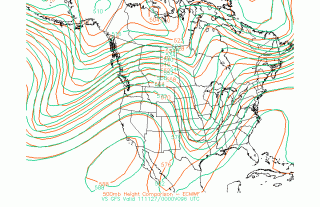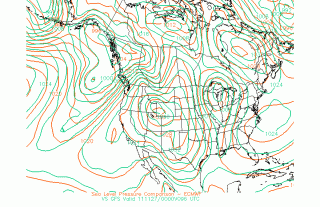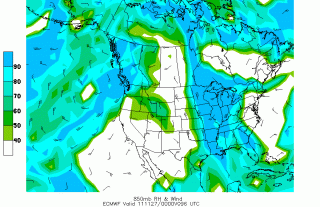This bright morning sun streaming through the sliding door of my balcony is blinding. At quarter-to-ten on the day before Thanksgiving, it shines low over the southeast horizon directly onto my face, forcing me to write with my left eye shut. That is not an altogether satisfying modus operandi, but I don’t feel like closing the blinds or wearing a … well, what the hell, why not wear a hat? I’ve just put on my trusty Tilley. Problem solved, though Lisa will probably look at me oddly when she steps into the room.
Here in West Michigan, we’re moving into high pressure and a warming trend through the holiday. But “warm” is a relative word which in this case means not terribly cold–rather nice, really–but don’t plan on wearing a T-shirt.
Hundreds of miles to my south, though, warm means warm. Warm enough to get the job done for convective weather. From now through April, Dixie Alley once again becomes the star of the show. The trough moving in for the weekend offers a good example of why.
It’s a deep trough, and a surface low up in the Great Lakes looks to wick up enough moisture into the Southeast to stoke the storm machine. I’ve included a couple of the latest 00Z Euro/GFS comparisons plus Euro 850 mb relative humidity to give you a sense of what’s shaping up for 96 hours
(click on images to enlarge them). The GFS is predictably faster than the ECMWF, but both are pointing to the same overall scenario, with the trough eventually pinching off into a closed low.Cloud cover presently looks like it will be rampant, minimizing instability. Still, given some ripping bulk shear, this system is something to keep an eye on as it evolves, particularly if you live in Dixie Alley.
That’s all for now. The sun has moved and is no longer blinding me. Time to get on with the rest of this day. May you and yours enjoy a happy and blessed Thanksgiving!




